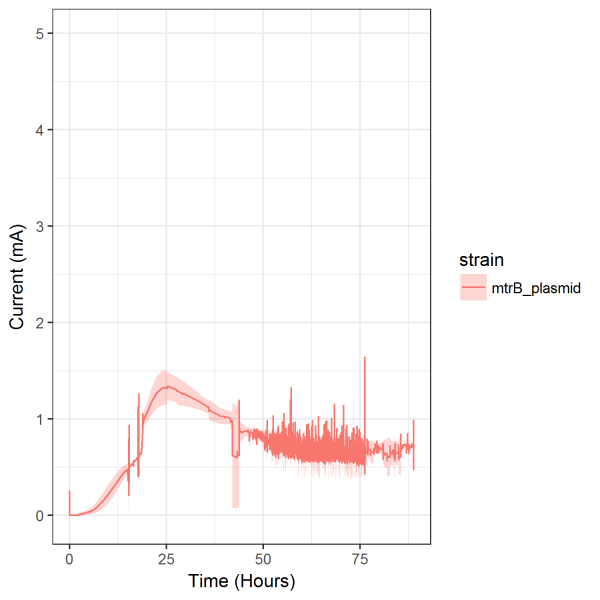Applied Design
Single-Chamber Biosensors
MSU-iGEM 2017 developed a cost effective, applied biosensor. We designed this biosensor to detect water contaminants in a variety of circumstances and be used by multiple audiences. The biosensor is user friendly even to common consumers and high school students as well. The simple design promotes easy assembly and can be used as an education tool for high schools to show the possibilities of synthetic biology. In detecting water contaminants, the biosensor is durable and portable for scientists to use in field testing and consumers to use at home. The system is designed for initial testing for contaminants that are not regulated or tested for by the EPA. The biosensor provides a cost effective, rapid initial to test if the water must be analyzed by more costly measures. The design also utilizes Arduino boards (1,2,3) to apply the needed potential so the bacteria can produce electricity.

Prototype Testing

This is what happens when a hydrogen gas bubble forms and pushes the media up onto the electrode as well as having the potassium solution spill from the bioreactor due to a poor connection of the reference electrode.
Upgrading Design
After seeing the initial current production, we modified the design by adding a larger syringe housing for the cathode up to the present 3 ml syringe. This protected against hydrogen gas pockets building up and shorting the circuit by pushing the media down off the titanium wire. We also standardized adding 18 gauge needles to this housing area to promote better ventilation of the hydrogen gas. This eliminated the main problem that was distorting the data. We also made new rubber stoppers that provided a better fit into the glass reference housing for more stable background data. This allowed us to produce smooth current graphs throughout our entire project.
References
(1) Aristizabal, D. H.; Giraldo, D. A.; Sanchez, S.; Taborda, G.; Baeza, A. J. Phys. Conf. Ser. 2017, 365, 11001.
(2) Jannelli, N.; Anna Nastro, R.; Cigolotti, V.; Minutillo, M.; Falcucci, G. Appl. Energy 2017, 192, 543–550.
(3) Yang, Y.; Ren, H.; Ben-Tzvi, P.; Yang, X.; He, Z. Int. J. Hydrogen Energy 2017, 42 (31), 20260–20268.
| Sponsors | ||||||||||
|---|---|---|---|---|---|---|---|---|---|---|
 |
 |
 |
 |
 |
 |
 |
 |
 |
 |
Contact us:



|

